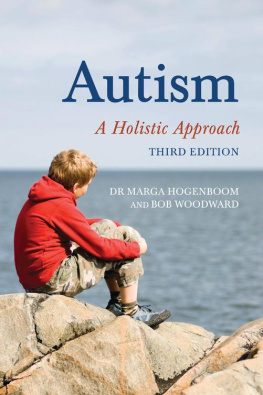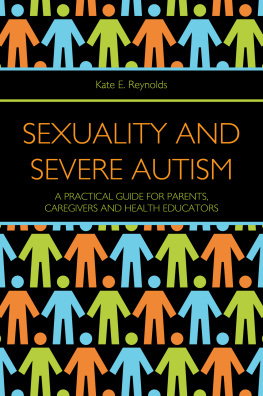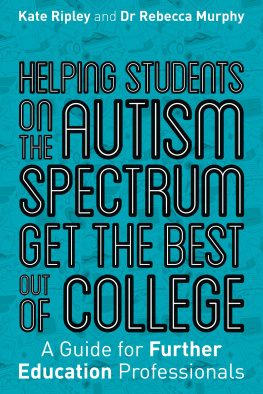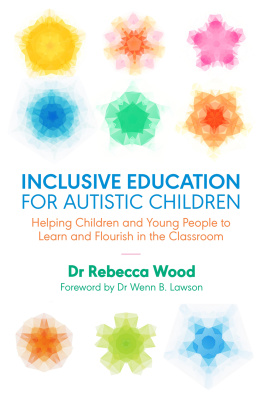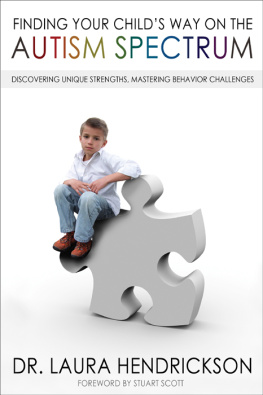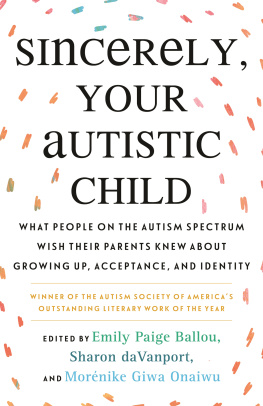Dr Marga Hogenboom van den Eijnden, MRCGP (Utrecht)
Marga Hogenboom works as a General Practitioner at the Camphill Medical Practice near Aberdeen and specialises in anthroposophic medicine. She has lived and worked with children and adults with autism for the last thirty years, and was a member of the NICE Guideline group for autism in adults 20102011.
Bob Woodward, M.Ed., M.Phil.
Since 1970, Bob Woodward has lived with and taught children with severe learning difficulties, including children with autism, at The Sheiling School, Camphill community, in Thornbury, Gloucestershire.
Dr Hans Mller-Wiedemann, MD, Ph.D.
During the 1960s, Dr Karl Knig, the founder of the Camphill movement, asked Hans Mller-Wiedemann specifically to develop an anthroposophic understanding of children with autism, and to investigate how to help these children become socially integrated. Dr Mller-Wiedemann took up this task in earnest over some thirty years, and became an acknowledged and respected authority in this field. He published various books and articles about his work, as well as poetry. He died in 1997.
Johannes M. Surkamp, MBE
For many years Johannes Surkamp was the Principal of Ochil Tower, a Camphill Rudolf Steiner school for children with special needs in Perthshire, Scotland. He has worked in Camphill schools and villages since 1952, and was awarded the MBE in 1995 for his services to education.
Mari Sterten, BA Curative Educational
Mari Sterten is a therapeutic practitioner with 35 years experience of working as a teacher and therapeutically with children with special needs. She has a post-graduate diploma in Autism and a post-graduate certificate in Sensory Integration. She is a long-term co-worker at Camphill School Aberdeen.
Paula Jacobs, BA Social Pedagogy
Paula Jacobs has worked at Camphill School Aberdeen for six years. She has a BA in Social Pedagogy and a post-graduate certificate in Autism and Learning. She works as an assistant house co-ordinator and leads sessions of therapeutic play with children.
Rka Tth, BA Social Pedagogy
Rka Tth has lived at Camphil for seven years, supporting individuals with a variety of additional needs in educational, therapeutic and care settings. She has a BA in Social Pedagogy and a post-graduate certificate in Autism and Learning.
Infants and children with autism remind us how subtle the natural beginning state of mental life is, and how it depends on human sympathy. What is this consciousness, emotion and sympathy for human company which an infant can show?
After thirty years work as an infant psychobiologist I am sure that our fundamental motives require a profound revision of the scientific explanations accepted by mainstream psychology over the past century. I am, therefore, willing to listen to alternative accounts that claim to be comprehensive. I am especially interested if they also claim to have useful applications in the education of the young, or in therapeutic work with people of any age who are emotionally disturbed and have difficulties in thinking, learning and communicating with others.
What prevents experts from grasping essential motive principles in the naive? What kind of approach would be more successful? Must it be scientific, and if so in what way? Scientists have to concentrate on one line of enquiry, paying close attention to the often very delicate and difficult methods they use to get evidence. Their notions or models of reality deliberately reduce their view, in order to see their subject clearly and have some predictable influence over it.
Common sense can readily find shortcomings in the more contrived explanations, which often seem only able to see what a person can acquire by education or through the conventions of social institutions, art, literature, technology, logic and science. Sympathy and compassion, which are so important in the actual experience of family and life in a close community, in caring for the sick and in teaching, are intuitive and spontaneous. They are not easily explained in terms of external facts and information understood. The understanding mind in itself has moral impulses that have to be accepted without reasoned explanation.
Infants are inarticulate, unskilled and unsophisticated. They have no authority and no justifiable beliefs or opinions. However, as the research of the past few decades has brought to light, they do have purposes, interests and moral emotions. They perceive other peoples actions and imitate. They perceive their mothers voice from before birth and attend to the musicality and narrative impulse of human talk and songs before they can see well. They engage purposefully with objects and events in the world around them and explore the effects of their body moving. They soon attend closely to interests and tasks that can be shared, seeking to grasp the meaning of the shared world. All this is achieved in the first year, much in the first few months, long before language and independent walking (Trevarthen 1987).
Many, perhaps most, academic authorities, including leading developmental psychologists, represent the infant as an impressionable learner, who, with little mental activity at first, has to acquire awareness of a self with a body and consciousness; who has to learn to perceive the independent life of other people with their bodies and consciousness. This psychology conceives the newborn as a scarcely conscious being whose emotions are crude states of agitation or arousal within the physiology of the brain and body, and are undifferentiated with regard to the reactions and identities of other people. More and more, this rational constructivist position, which sees the body as innate but the mind as learned, has had to revise its models. It has had to grant greater intuitive psychological powers to the infant, even from the moment of birth, and thus, inevitably, from before birth too.
True, the rapid growth of a childs consciousness and skill that takes place in the first years of life obviously occurs with amazing speed. From day to day babies become more aware and productive in response to their family and society, and then toddlers pick up the words that name the most interesting things and actions in the talk around them. However, this learner is from the start an active one, seeking companionship from people who accept his or her own vitality, curiosity and emotional enthusiasm. Learning to be clever in human society takes a human effort in the learner, and only a human child can contribute this active interest.
Children with autism have lost some of this natural vitality of mind, some of the intricate proficiency of acting and attending, of sensing the body and the world. As infancy passes there are higher hurdles to climb and a confusion of awareness, which toddlers with autism have to overcome in achieving confidence in their feelings of self, and finding the right methods of communication to make others understand and share (Hobson 1993). The main task is to attract sufficiently patient, supportive and receptive attention from those who give care and teach.

